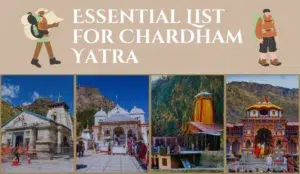Nestled amidst the snow-capped peaks and lush green valleys of the Himalayas, Uttarakhand is not only renowned for its breathtaking landscapes but also for its rich and diverse culinary heritage. Among the many traditional dishes that grace the tables of Uttarakhandi households is the humble yet flavorful Patyud a dish that embodies the essence of simplicity and rustic charm. Join me on a culinary journey as we delve into the world of Patyud, uncovering its origins, ingredients, preparation, and the cultural significance it holds in the hearts of the people of Uttarakhand.
Origins and Cultural Significance
Patyud traces its origins to the hilly terrain and agrarian lifestyle of Uttarakhand, where simple and wholesome meals are prepared using locally sourced ingredients. Traditionally enjoyed by farmers and villagers as a nourishing midday meal, Patyud has become an integral part of Uttarakhandi cuisine, passed down through generations as a cherished family recipe. Beyond its culinary appeal, it holds cultural significance, symbolizing the spirit of resilience, community, and connection to the land that defines the people of Uttarakhand.
Ingredients
The beauty of Patyud lies in its simplicity, with basic ingredients that are readily available in the hills of Uttarakhand. While variations may exist from region to region and household to household, the core ingredients typically include
1. Mandua (Finger Millet) Flour: A nutritious grain indigenous to the Himalayan region, mandua flour forms the base of Patyud, providing a rich source of protein, fiber, and essential vitamins and minerals.
2. Water: Used to knead the mandua flour into a dough, creating a soft and pliable texture.
3. Salt: Added to enhance the flavor of the dough and balance the taste of the dish.
4. Ghee (Clarified Butter): Used for frying the Patyud, imparting a rich and buttery flavor to the dish.
Preparation
Making Patyud is a straightforward process, yet it requires skill and patience to achieve the perfect texture and flavor. Here’s a simplified version of the traditional recipe:
- In a mixing bowl, combine mandua flour and salt. Gradually add water and knead the mixture into a smooth dough, ensuring that it is neither too soft nor too firm.
- Divide the dough into small, equal-sized portions and shape them into round balls.
- Heat ghee in a frying pan or tawa (griddle) over medium heat.
- Flatten each dough ball between your palms to form a disc-shaped Patyud.
- Carefully place the Patyud in the hot ghee and fry until golden brown and crispy on both sides.
- Once cooked, remove the Patyud from the ghee and drain the excess oil on a paper towel.
- Serve hot with a dollop of fresh homemade butter or a side of local chutney for added flavor.
Flavors and Variations
Patyud, with its earthy flavor and hearty texture, is a culinary delight that can be enjoyed on its own or paired with various accompaniments. While the basic recipe calls for mandua flour and salt, creative variations abound, with some households adding spices like cumin or ajwain for extra flavor. Additionally,it can be enjoyed sweet or savory, depending on personal preference and the occasion. Sweet variations may include the addition of jaggery or sugar to the dough, while savory versions may incorporate ingredients like onions, green chilies, or grated vegetables for added taste and texture.
Health Benefits
It not only tantalizes the taste buds but also offers a host of health benefits, thanks to its nutritious ingredients. Mandua flour is gluten-free and rich in protein, making it an excellent alternative for individuals with gluten sensitivities or allergies. Additionally, mandua is packed with essential nutrients like iron, calcium, and magnesium, making Patyud a wholesome and nourishing choice for a balanced diet. When cooked in ghee, it provides healthy fats that aid in nutrient absorption and promote satiety, making it a satisfying and energizing meal option.
Exploring the Cultural Significance
Beyond its delicious taste and simple preparation, Patyud holds deep cultural significance in Uttarakhand. It is not just a dish but a symbol of resilience, community, and connection to the land. Traditionally, Patyud was prepared by farmers and villagers as a sustaining meal during long days of work in the fields or forests. It served as a source of nourishment and energy, enabling people to endure the rigors of rural life with fortitude and spirit. Today, Patyud continues to evoke memories of simpler times, reminding the people of Uttarakhand of their rich agricultural heritage and the values of hard work, self-sufficiency, and solidarity that have sustained their communities for generations.
Seasonal Celebrations
Patyud is often associated with festivals, celebrations, and special occasions in Uttarakhand. During festivals like Holi, Diwali, and Raksha Bandhan, families come together to prepare batches of Patyud, which are then shared with neighbors, friends, and relatives as a gesture of goodwill and camaraderie. In rural areas, Patyud-making sessions are a common sight during harvest festivals, where villagers gather to celebrate the bounty of the land and give thanks for the blessings of nature.
Preserving Tradition
As Uttarakhand undergoes rapid modernization and cultural shifts, dishes like Patyud play a crucial role in preserving the region’s culinary heritage and traditional practices. Passed down from generation to generation, Patyud represents a link to the past—a reminder of the customs, rituals, and values that have shaped the identity of the people of Uttarakhand. By embracing dishes like Patyud and incorporating them into everyday life, the people of Uttarakhand ensure that their cultural legacy continues to thrive, even in the face of change.
Other Famous Dishes of Uttarakhand
Bhang ki Chutney
Bhang ki Chutney is made from hemp seeds (bhang), mixed with yogurt, lemon juice, and local spices. It’s often served as a condiment with various snacks and meals, adding a distinctive flavor to Uttarakhandi cuisine.
Bal Mithai
Bal Mithai is a famous sweet from Uttarakhand made from khoya (reduced milk) rolled into small balls and coated with white sugar balls known as “palm.” It’s then garnished with chopped nuts like almonds or pistachios, creating a unique and indulgent treat.
Arsa
Arsa is a traditional sweet made from rice flour, jaggery, and ghee. The mixture is deep-fried until golden brown and crispy, resulting in a delicious sweet treat that is often enjoyed during festivals and celebrations.
Bhatt ki Churkani
Bhatt ki Churkani is a curry made from black soybeans (bhatt) cooked with onions, tomatoes, and a blend of spices. It’s a hearty and flavorful dish that pairs well with rice or roti.
Kandali Ka Saag
Kandali Ka Saag is a leafy green vegetable dish made from the leaves of the sisunak plant, which is similar to spinach. The leaves are cooked with mustard oil, garlic, and local spices, resulting in a delicious and nutritious side dish.
Conclusion
In conclusion, Patyud stands as a shining example of Uttarakhand’s rich culinary heritage a dish that celebrates simplicity, sustainability, and the deep connection between food and culture. Whether enjoyed as a midday snack, a hearty breakfast, or a comforting meal after a long day’s work, Patyud embodies the essence of Uttarakhandi cuisine, offering a taste of tradition and a glimpse into the soul of the Himalayas. So, the next time you find yourself craving a wholesome and flavorful dish.
FAQs About Patyud
1. What is Patyud?
Patyud is a traditional dish from Uttarakhand, India, made from mandua (finger millet) flour. It is typically prepared by kneading mandua flour into a dough, shaping it into small discs, and frying them in ghee (clarified butter) until golden brown and crispy. Patyud is often enjoyed as a snack or as part of a meal, offering a hearty and flavorful taste of Uttarakhandi cuisine.
2. What are the main ingredients in Patyud?
The main ingredients in Patyud include mandua (finger millet) flour, water, salt, and ghee (clarified butter). Mandua flour serves as the base for the dough, while water is used to knead it into a smooth consistency. Ghee is used for frying the Patyud, imparting a rich buttery flavor to the dish.
3. Can I make Patyud without mandua flour?
While mandua flour is traditionally used to make Patyud, variations of the dish can be made using other flour such as wheat flour or rice flour. However, the flavor and texture of the dish may differ slightly depending on the type of flour used. Mandua flour is preferred for its nutritional value and distinct taste, but substitutions can be made based on personal preference and availability of ingredients.
4. How is Patyud traditionally served?
Patyud is traditionally served hot, straight from the frying pan or tawa (griddle), with a dollop of fresh homemade butter or a side of local chutney for added flavor. It can be enjoyed as a snack on its own or as part of a meal, paired with other traditional dishes from Uttarakhand.
5. Is Patyud gluten-free?
Yes, Patyud is typically gluten-free when made with mandua (finger millet) flour, as mandua is a gluten-free grain. However, it’s essential to ensure that all ingredients used in the dish are free from gluten contamination, especially if you have a gluten sensitivity or allergy.





